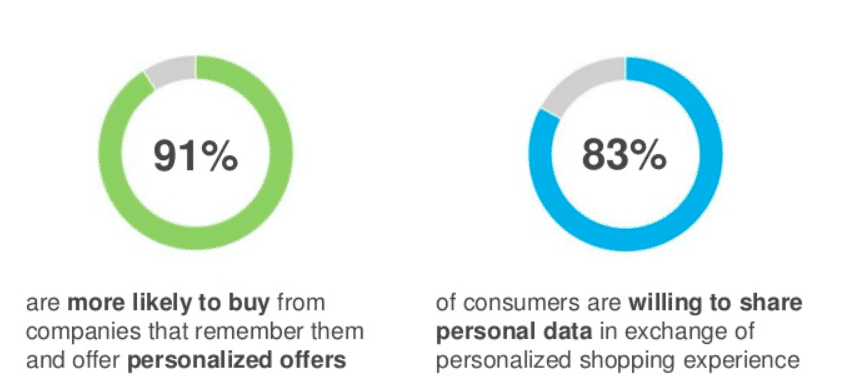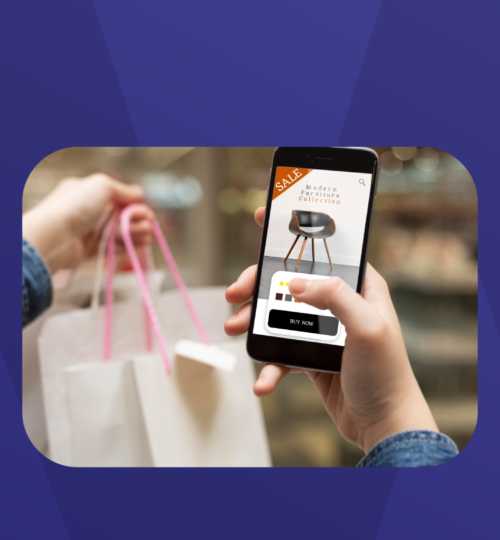Do you remember walking into a store and buying an item that you have never thought of? Most of us do. It was not because we needed anything, but we have been approached by a skilled salesperson. In a conventional retail store, skilled salespeople would observe, approach, and convince customers by offering insightful and wise suggestions. Or, imagine that you are visiting your favorite retail store. The employees already know what you like the most, what suits you the best, and what you may like. Simply put, they know you well enough to make your purchase easier and earlier. What if I told you that the exact same can also be done when a visitor “walks into” your mobile application? It’s called personalization, and just like an experienced salesperson, personalizing content on the mobile app will increase your sales in the same way.
Thanks to m-commerce personalization, each of your customers can simultaneously be treated personally. With the digitalization and high competition, “the one size fits all” approach does not work online anymore.
In this post, we will explain to you how personalizing content on the mobile app will increase your sales, and how you can apply it to your mobile application.
The mobile application personalization is simply having perfect salespeople who help customers pick the most suitable outfits individually. By using different data, you may also have perfect salespeople on board to generate more sales from the mobile application visitors.
According to “the Propel Growth & Value Report” by Accenture,
- 91% of customers are more likely to buy from companies who remember them and provide relevant offers.
- 83% of customers are willing to share their data in exchange for a personalized experience.
Another report from Invesp Consulting also states that:
- 56% of online shoppers are more likely to return an app that shows personalized product recommendations.
- Personalized display ads have 10 times more CTR than traditional display ads.
These numbers doubtlessly show that personalization makes customers feel special, and improves their shopping experience; thus, brings more loyal customers, and high conversion rates.
Yet, most mobile applications still have the same static contents for every customer, even though each customer has unique tastes and motivations for making purchases online.
Let’s have a deeper look at personalization in the m-commerce world.
- It starts with “the right” data collection
The cornerstone of personalizing any step in the customers’ journey from discovery to purchase and to repeat purchase is data collection. If analyzed well having the data of traffic, on-site interactions, email, personal information, search, items on wishlist, and purchases would be enough in most cases; but, it is also vital to understand who to track, what data point to track, when to track, how to track. With the infrastructure in place to efficiently and accurately collect data in real-time, the next step is formulating a personalization strategy around the specific needs and the size of your business.
The personalized shopping strategy you employ will typically depend on the size of your customer base, the volume of sales your store generates, and the traffic of your customers.
- Dynamic on-App Personalized Product Recommendations
According to research conducted by Barilliance, 11.5% of revenue from eCommerce comes from personalized product recommendations. The core objective of on-app personalized recommendations is to drive up the average order value of each shopping session, and apparently, it works. In other words, it is a great way to make shoppers add more items to their shopping cart with the hope that they checkout with as many, if not all, the items in their carts.
- Behavioral Targeting
Behavioral targeting goes beyond traditional demographic targeting data such as focusing only on age, sex, and location; rather, it layers in more specific actions customers take to get to your mobile application and their “on-app behavior patterns” for the purpose of segmentation, such as the number of previous visits a shopper has made to your mobile application, the most frequented category pages, their purchase history, their referral traffic source, and so on.
- Retargeting ads still have it.
Retargeting is a popular, yet still not much appreciated method in the online marketing world. It works by serving ads to customers based on their prior engagements with your store.
If someone were to visit your store without making a purchase, it is possible for you to create retargeting campaigns to focus on those users specifically based on their actions.
These campaigns would remind your products to those users by making them see the advertisements of your store on other websites.
To conclude, m-commerce personalization is not a fad; it is a vital strategy to be followed by all. Remember that, your customers are wanting a more personalized shopping experience, and they are willing to give you personal information in exchange. All you have to do is to collect the right data, and analyze it comprehensively; the rest is all cookies and segmentation. If you would like to start creating a personalization strategy, the first step starts here.







